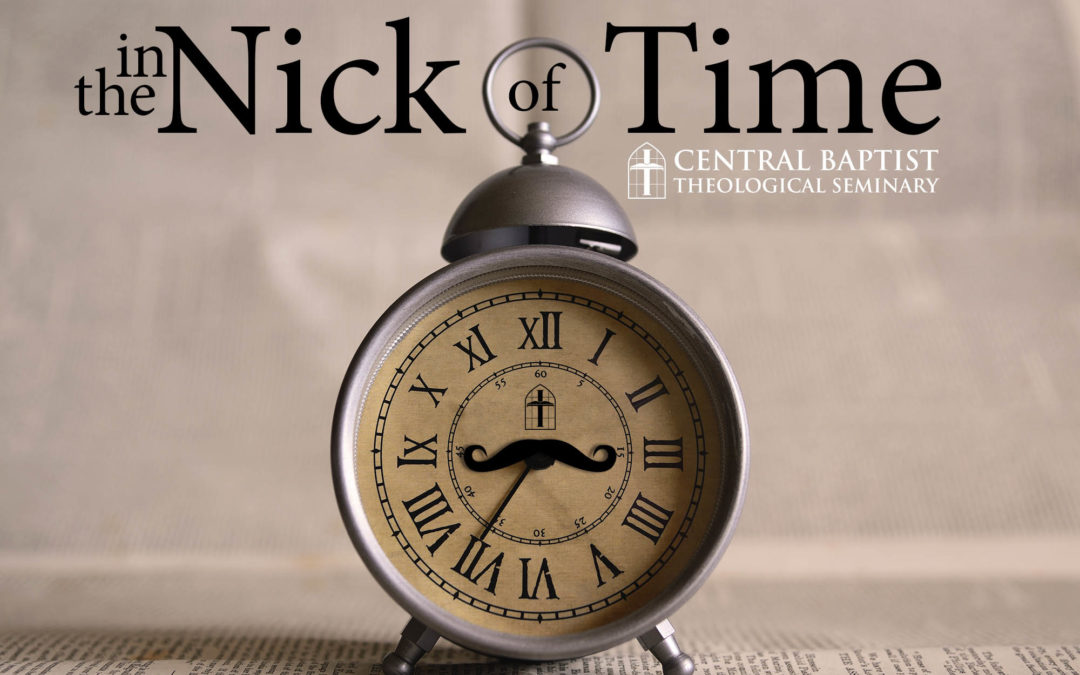Discussions of Pilgrim’s Progress tend to focus upon either its literary value or its theological interpretation. Not many interpreters speak of its value as a work of fantasy. Yet Bunyan chose to incorporate multiple fantastic elements, and those fantastic elements become some of the most important features of the story. This is not surprising. Bunyan presents his narrative as a dream, and the literary world that he creates has a dream-like quality. In one sense, even the ordinary elements in the story (a city, a slough, a wicket gate, a road) take on a kind of fantastic quality.
Several of the scenes in the Interpreter’s House rely on fantastic images: an unquenchable fire, a stately palace peopled by golden-robed figures, a man in an inescapable iron cage. Once Christian leaves the Interpreter’s House, fantastic elements appear more frequently. These are sometimes purely allegorical. Other times they are properly occult, in that they represent Bunyan’s interpretation of the unseen world. In either case, they offer an experience within the story that goes beyond the ordinary, everyday experience of the reader.
Christian has only just lost his burden when he comes upon three men—Simple, Sloth, and Presumption—lying asleep and chained with fetters. In spite of his best efforts he cannot awaken them or alert them to their danger. After climbing the Hill Difficulty, he arrives at the Palace Beautiful, which is guarded by chained lions. This palace houses the relics of many Old Testament adventures: Moses’s rod, Jael’s hammer and nail, Gideon’s pitchers and trumpets, Shamgar’s oxgoad, and David’s sling. It also houses the sword with which Christ will kill the Man of Sin.
Leaving the Palace Beautiful, Christian must pass through the Valley of Humiliation. There he encounters Apollyon. Bunyan describes Apollyon as a fire-breathing monster covered in scales like those of a fish, with the wings of a dragon, the feet of a bear, and the mouth of a lion. Christian fights a battle with Apollyon and wins, but he is sorely wounded. After his victory a hand appears to him holding leaves of the tree of life. When he applies the leaves to his wounds he is healed immediately.
After the Valley of Humiliation, Christian must go through the Valley of the Shadow of Death. Here he passes by the Mouth of Hell, which threatens him with flame and smoke, and from which he hears sorrowful voices. He becomes so disoriented that he mistakes the voices of fiends whispering blasphemies for the thoughts of his own mind. Halfway through the valley he emerges into daylight, and Christian looks back to see that the valley behind him is filled with satyrs, hobgoblins, and dragons of the pit. The valley before him is filled with snares and traps, which Christian manages to avoid. Near the end of the valley he encounters his first giants, Pope and Pagan. They were once fearsome enemies of pilgrims, but they have now been rendered nearly powerless.
Pilgrim’s Progress exhibits a particular fondness for giants. After Pope and Pagan, Christian goes on to be imprisoned by the Giant Despair. In the second part of Pilgrim’s Progress, Christiana and her companions also encounter the Giant Despair, and they face the Giant Grim (also called Giant Bloody-man), the Giant Maul, and the Giant Slay-good. Indeed, slaying giants becomes one of the principal activities of Great-heart, guide to Christiana and her company.
Among the other fantastic elements, Bunyan includes some rudimentary magic. For example, he has Christian and Hopeful cross the Enchanted Ground—and what is enchantment but another word for magic? This ground has the supernatural power to make people drowsy and even to put the unwary to sleep. Only by exerting the will and remaining active can this enchantment be resisted.
Other fantastic elements could be cited, but this description gives a taste of Bunyan’s work. While Bunyan never uses fantasy for gratuitous affect, he clearly intends it to add interest. These elements increase his readers’ attention and draw them through the story.
Bunyan also uses the fantasy to emphasize whatever point that he is making at the moment. For example, how could despair be better personified than as a giant: cruel, looming, powerful, unassailable? Or what better depiction of the now-enfeebled powers of paganism and papacy than as decrepit giants?
In the case of Apollyon, several of the constituent parts in Bunyan’s description evoke the imagery of biblical apocalypses. This enemy of pilgrims is depicted with the feet of a bear, the wings of a dragon, the mouth of a lion. While the descriptions do not exactly match anything in Scripture, the dragon, bear, and lion are drawn from imagery that, in Daniel and Revelation, depicts powers opposed to God.
In short, Pilgrim’s Progress is not merely a great work of literature. It is not merely a great work of devotion and theology. It is also a great work of fantasy, and therein lies much of the enjoyment that its readers experience.
![]()
This essay is by Kevin T. Bauder, Research Professor of Systematic Theology at Central Baptist Theological Seminary. Not every one of the professors, students, or alumni of Central Seminary necessarily agrees with every opinion that it expresses.
from The Author’s Apology for His Work
John Bunyan (1628–1688)
Art thou for something rare and profitable?
Or would’st thou see a truth within a fable?
Art thou forgetful? Wouldest thou remember
From New-Year’s day to the last of December?
Then read my fancies; they will stick like burs,
And may be, to the helpless, comforters.
This book is writ in such a dialect
As may the minds of listless men affect:
It seems a novelty, and yet contains
Nothing but sound and honest gospel strains.


